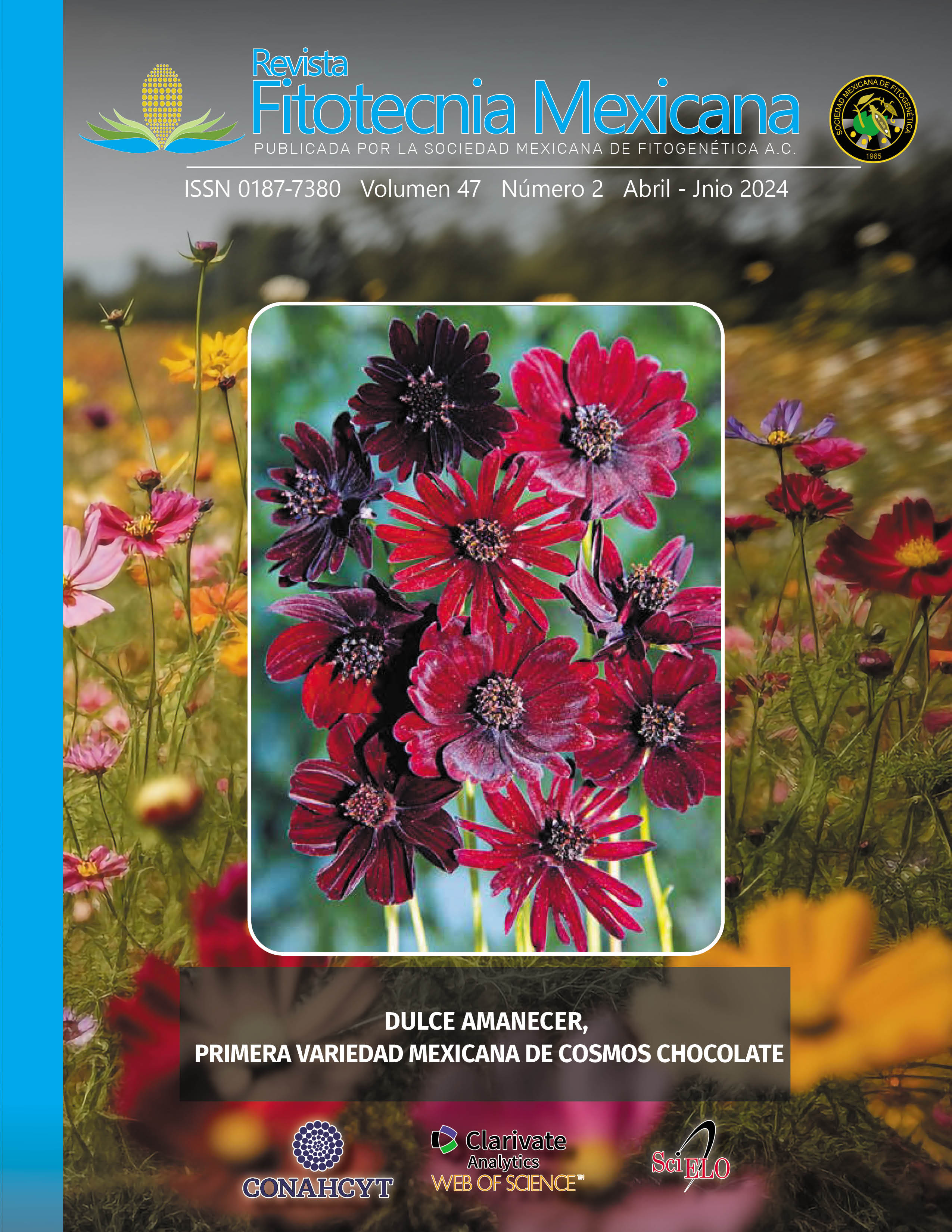PHENOTYPIC CHARACTERIZATION OF ELITE BEAN GERMOPLASM FOR RESISTANCE TO COMMON BLIGHT
Main Article Content
Abstract
Common blight is one of the most important diseases in bean crop (Phaseolus vulgaris) in Mexico and worldwide. This disease is caused by the phytopathogenic bacteria Xanthomonas axonopodis pv. phaseoli and X. fuscans subsp. fuscans. In this study 23 bean (Phaseolus spp.) populations with different genetic origin were evaluated to know their response to the disease by evaluating the final area under the disease progress curve (AUDPC) of each one. Two experiments were established, in the first one, resistance to the strains was evaluated separately in the varieties Flor de Mayo and Negro Bola. In the second experiment the strains were mixed and infiltrated in combination into the 23 genotypes to analyze the final AUDPC. The severity was evaluated six times every five days in all the trials carried out. Results showed that the resistance of the Flor de Mayo variety to both strains is more stable but lower than that of Negro Bola variety and that the isolated of X. fuscans subsp. fuscans, regardless of the environment, was statistically more aggressive than that of X. axonopodis pv. phaseoli; likewise, it was determined that the genotype Mixteco-1 had the highest AUDPC, while the genotypes Ejotero (Phaseolus vulgaris L.), Tepari (Phaseolus acutifolius A. Gray) and Ayocote morado (Phaseolus coccineus L.) showed the lowest AUDPC, Jointly, variations of genotypes were found within and between environments. Because these genotypes are of different genetic origin, it is proposed to pyramide the resistance genes they possess, by planning hybridization in breeding programs and achieving long-lasting horizontal resistance.

